Meeting ANS Collaboration 29-30 Sept 2012
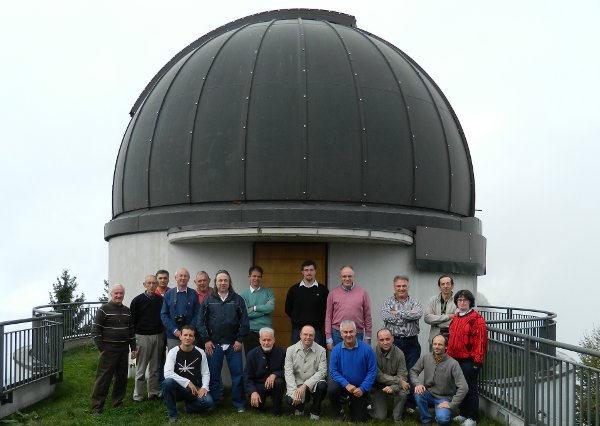 In 2012 the annual meeting of ANS Collaboration (directed by
prof. U. Munari) was held at the observatory of Campo dei Fiori. Unfortunately the weather was not fine and no
observations were possibile during the meeting. Many partecipants presented their work within the collaboration both in
multiband photometry and spectroscopy. A list of the arguments can be found in the pages devoted to the meeting and covered large field photometry,
15:50 narrowband photometry (Stromgren) - (O[III], Ha) , RAVE/APASS photometry, observations of R Aqr, CI_Cyg eclipse,
9:40 A DT Ser, spectroscopic survey of Red Clump stars, spectroscopic orbits of bright symbiotic stars,
IPHAS 205836.43+503307.2 light curve, calibration of photometric sequences, comments and developments
on ANSphotometry software .
In 2012 the annual meeting of ANS Collaboration (directed by
prof. U. Munari) was held at the observatory of Campo dei Fiori. Unfortunately the weather was not fine and no
observations were possibile during the meeting. Many partecipants presented their work within the collaboration both in
multiband photometry and spectroscopy. A list of the arguments can be found in the pages devoted to the meeting and covered large field photometry,
15:50 narrowband photometry (Stromgren) - (O[III], Ha) , RAVE/APASS photometry, observations of R Aqr, CI_Cyg eclipse,
9:40 A DT Ser, spectroscopic survey of Red Clump stars, spectroscopic orbits of bright symbiotic stars,
IPHAS 205836.43+503307.2 light curve, calibration of photometric sequences, comments and developments
on ANSphotometry software .
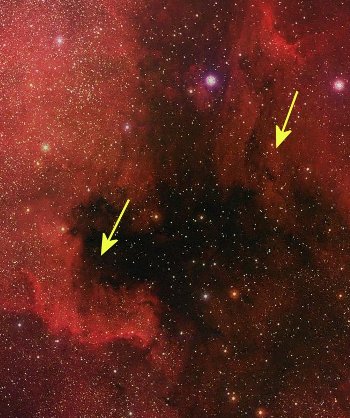 Brightening of several magnitudes of two very young stars (FU Orionis variables) has been confirmed spectroscopically
with our 60 cm telescope within
Brightening of several magnitudes of two very young stars (FU Orionis variables) has been confirmed spectroscopically
with our 60 cm telescope within  Nova Aql 2009 (V1722 Aql) was discovered by Nishiyama & Kabashima (2009) on 2009 December
14.40 UT. Our observatory started spectroscopic follow-up within
Nova Aql 2009 (V1722 Aql) was discovered by Nishiyama & Kabashima (2009) on 2009 December
14.40 UT. Our observatory started spectroscopic follow-up within 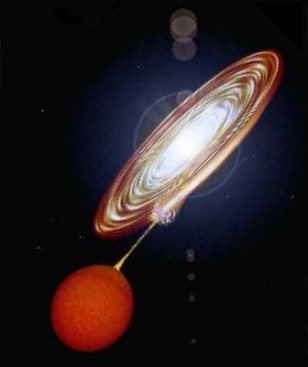 High resolution echelle spectra of V407 Cyg recorded by Paolo Valisa with 0.6 m telescope of
Schiaparelli Observatory in the period end March-early April within
High resolution echelle spectra of V407 Cyg recorded by Paolo Valisa with 0.6 m telescope of
Schiaparelli Observatory in the period end March-early April within
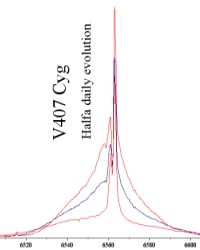 On March 10, 2010, Japanese observers K. Nishiyama and F. Kabashima discovered V407 Cyg in outburst
with V=7.4, far brighter than ever recorded for this star. In our observatory,
within
On March 10, 2010, Japanese observers K. Nishiyama and F. Kabashima discovered V407 Cyg in outburst
with V=7.4, far brighter than ever recorded for this star. In our observatory,
within 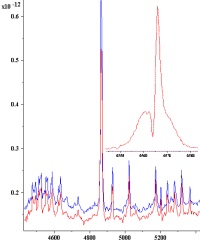 The Symbiotic star V1413 Aql entered a new outbursting phase at beginning of March 2010
rising from V=13 to V=10.9. Our observatory started a spectroscopic follow-up
within
The Symbiotic star V1413 Aql entered a new outbursting phase at beginning of March 2010
rising from V=13 to V=10.9. Our observatory started a spectroscopic follow-up
within